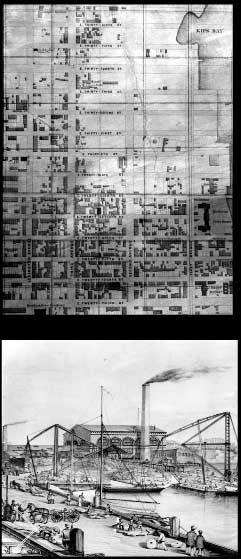

After the grid plan was established for New York, the physical streets were laid out. The move uptown along the new streets began slowly in the 1820s and 1830s, and the area around Rose Hill Farm retained much of its rural character during this period. The Rose Hill estate house was still standing until the early 1830s, and the barn is reported to have stood on 24th Street even longer.
The new north-south roads in Rose Hill and Kips Bay became major thoroughfares, and the Third Avenue replaced the Eastern Post Road as the primary route uptown to the Bronx and beyond. The side streets were constructed more slowly. Development followed, and by one account the city was expanding north by three streets a year by the 1840s and 1850s.
Being beyond much of the developed city in the early and mid-nineteenth century, the east 20s became the location of industrial and commercial development. Following the partition of Rose Hill Farm into lots in 1812, one of the first major developments occurred in 1826 when an association of New York butchers purchased lots along 24th Street, just west of Third Avenue for the establishment of a stockyard known as the Bull's Head Market. Other commercial interests moved into the East 20s and 30s. The Empire Stone Dressing Company operated a large facility between 28th and 29th Streets on the East River, where stone was brought in by boat to be cut for use in construction. The Empire Iron Works had a large factory along the river at 25th Street, and the Union Steam Works, which manufactured rifles among other products, stood at 22nd Street and Second Avenue. One of the first soda